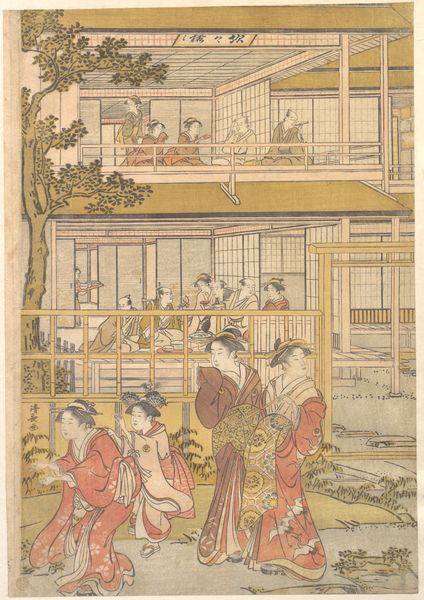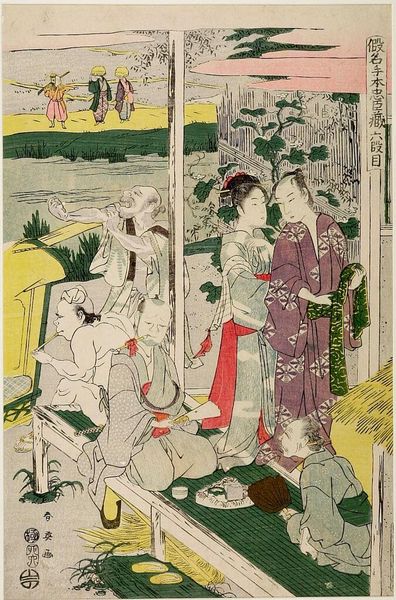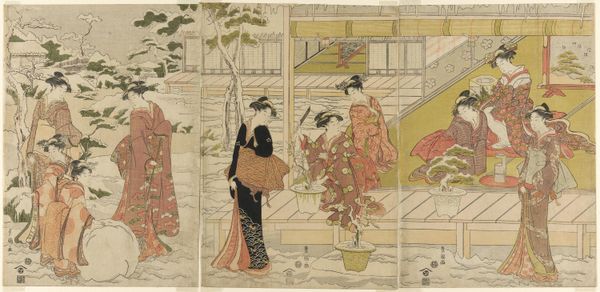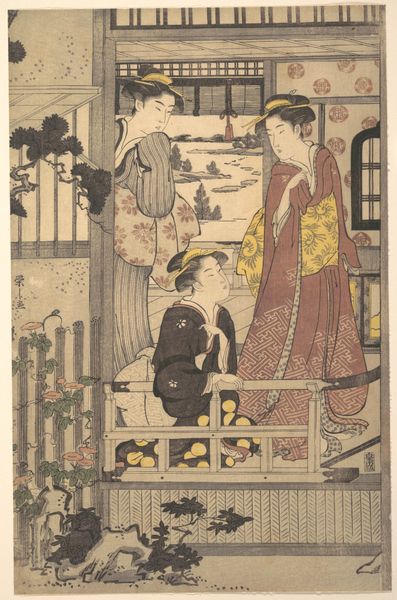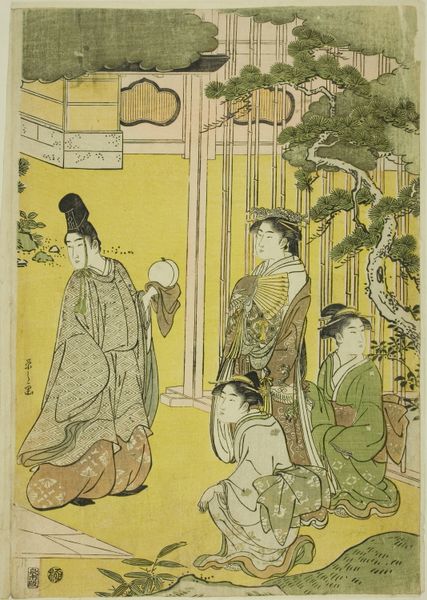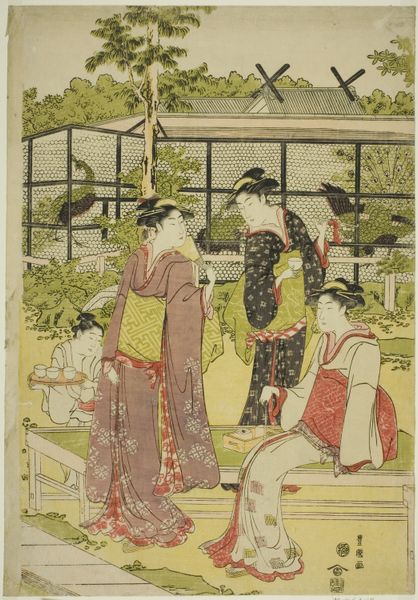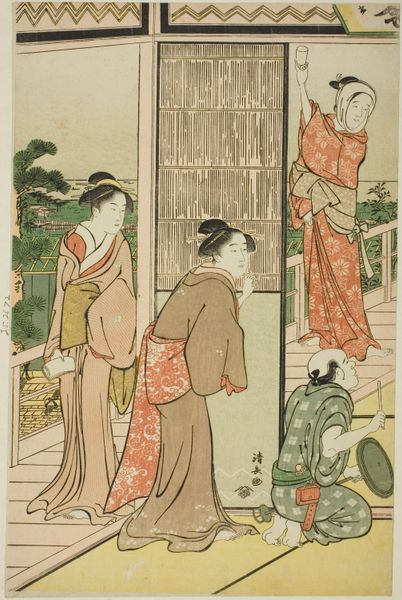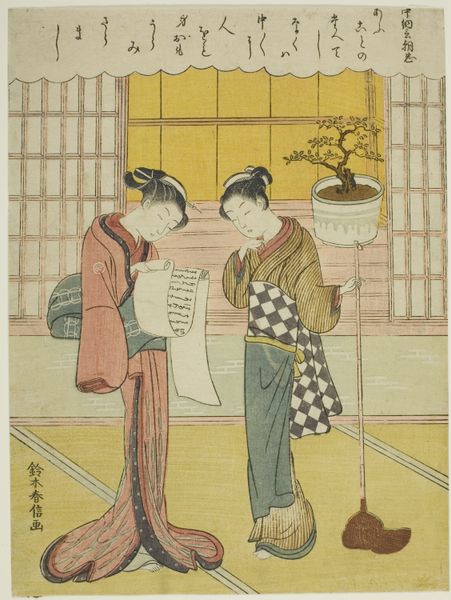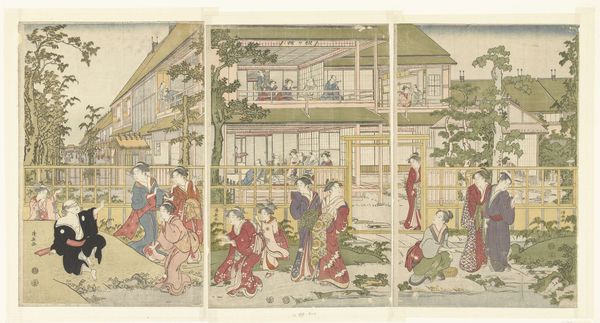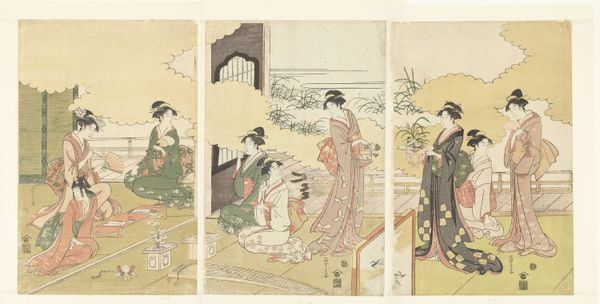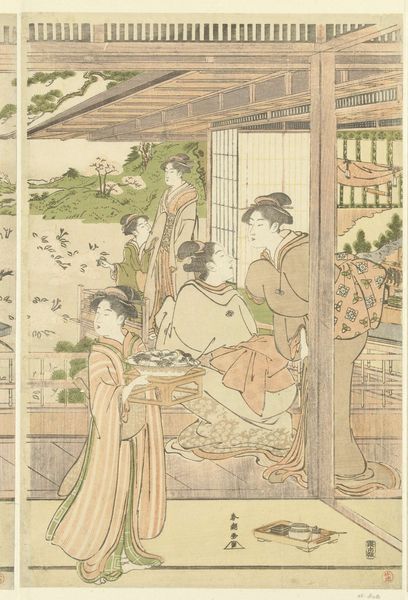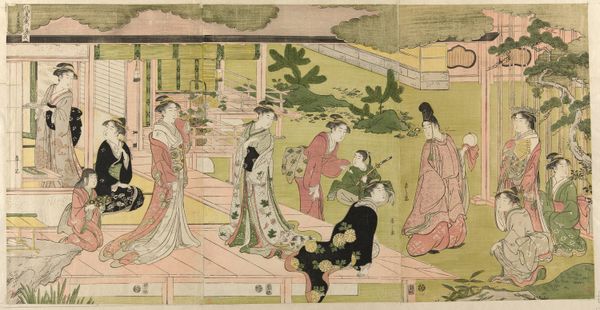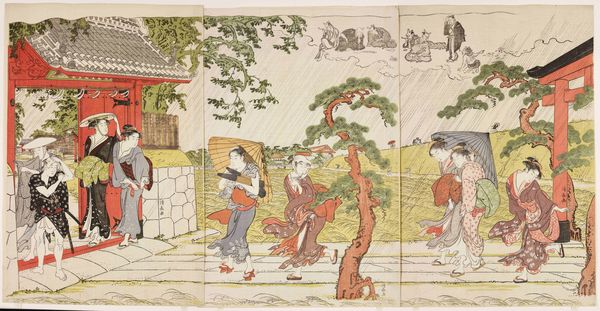
print, woodblock-print
#
portrait
# print
#
asian-art
#
landscape
#
ukiyo-e
#
woodblock-print
#
genre-painting
Dimensions: height 385 mm, width 250 mm
Copyright: Rijks Museum: Open Domain
Curator: This print is called "Blindemannetje spelen," made between 1792 and 1796 by Torii Kiyonaga. It's currently held in the Rijksmuseum collection. Editor: My first thought is of elegant restraint. The muted palette and structured composition almost belie the playfulness implied by the title. It's a surprisingly cool-toned piece for what I imagine is a warm, outdoor scene. Curator: Kiyonaga, known for his depictions of idealized feminine beauty, certainly tempers any overt frivolity. The figures exude a refined grace, almost like characters in a carefully staged play. This kind of portrayal elevated genre scenes, making them acceptable for broader audiences who enjoyed traditional courtly themes. The women were icons and style leaders of their era. Editor: I'm interested in the woodblock process itself here. The layering of colors, the precision required to carve those delicate lines... it speaks to a complex system of production involving not only the artist, but also the artisans responsible for carving the blocks and printing the final image. There is an economic value to consider and class implications about who owned and produced ukiyo-e works. Curator: Absolutely, and those seemingly simple lines carry a profound weight. They reflect a societal emphasis on controlled expression and harmony, and echo similar linear elements in traditional Japanese calligraphy and design, where the absence of line is just as important as the line itself. Here the linear geometry gives structure, reinforcing this is not chaos but rather ritual. Editor: And yet, looking closely, I can see subtle variations in the application of color, little imperfections in the print that humanize the process. I also want to address the support: this delicate paper has survived two centuries. The paper used for woodblock printing also has inherent cultural and economic meaning, as the industry drove techniques and knowledge that were highly coveted. Curator: I agree, this interplay of control and delicate imperfection is one of the things that makes Ukiyo-e prints so captivating. The symbolic world is intentionally calibrated here: even this simple game becomes more interesting by the controlled depiction of nature as well as of its society. Editor: For me, understanding the hands and labor involved, both in the artistry and the craft, enriches the experience. It helps to demystify the object as a relic and acknowledge it as a product of its time, deeply intertwined with social and economic forces. Curator: Precisely. Appreciating both the symbolic richness and the tangible reality offers a richer, more nuanced encounter with this exquisite print. Editor: Indeed, it encourages us to view it not only as a pretty picture, but as a valuable record of cultural memory.
Comments
No comments
Be the first to comment and join the conversation on the ultimate creative platform.

